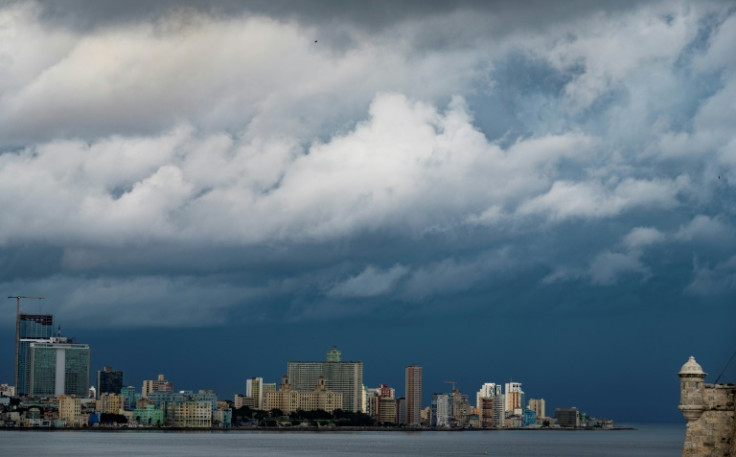Tropical Storm Idalia Strengthens Off Cuba, Barrels Toward Florida

Tropical Storm Idalia strengthened as it passed by the western tip of Cuba on Monday, taking aim at the Gulf coast of Florida with what forecasters predicted would be a "life-threatening" rise in tides and storm surge.
Florida Governor Ron DeSantis warned the storm -- likely to make landfall there as a hurricane on Wednesday -- could have major impacts along the Gulf of Mexico, telling a news conference that evacuations would take place and residents should prepare.
"Life-threatening storm surge and dangerous winds becoming increasingly likely for portions of Florida," the National Hurricane Center (NHC) said in an 8 pm (0000 GMT) update.
US President Joe Biden spoke with DeSantis earlier Monday and approved an emergency declaration for the state, promising it would have his full support, a White House spokesman said.
Storm surge and hurricane watches have been issued for parts of Florida's Gulf coast as heated Gulf of Mexico waters turbocharge the storm, the NHC said.
It predicted the highest storm surges north of Tampa Bay, a metropolitan region with some 3.2 million residents, saying that "inundation of between eight to 12 feet above ground level is expected."
Flash flooding may hit other parts of Florida, including the state's panhandle region, and southern Georgia into Wednesday, the NHC said.
The US Federal Emergency Management Agency (FEMA) is already preparing for the storm's impact, including by deploying some of its staff, according to the White House.
Cuban authorities declared a hurricane alert for the provinces of Pinar del Rio and Artemisa as well as Isla de la Juventud, an island.
In Cuba, thousands of people evacuated or fled ahead of the storm, authorities and state media said.
After passing Cuba Idalia will move out over the Gulf, which scientists say is experiencing a "marine heat wave" -- energizing Idalia's winds as it races towards Florida.
The storm "will be moving over waters near 31C (88 degrees Fahrenheit)," the NHC said.
Heat is one factor that powers hurricanes and "rapid intensification is becoming increasingly likely before landfall... Idalia should keep strengthening up to landfall" as a major hurricane, it warned.
Major hurricanes are usually a Category 3 and up on the five-level Saffir-Simpson scale -- storms that the NHC says can cause "devastating" and "catastrophic" damage.
Cuban state media said some 8,000 people have left their homes to seek shelter with family or friends in Pinar del Rio, the same province walloped last September by Hurricane Ian, which killed at least two people and left millions without electricity.
Idalia was already buffeting parts of southeastern Mexico with wind and rain earlier in the day Monday.
In the state of Quintana Roo, home to Cancun and other coastal tourist resorts, Idalia dumped rain and put a damper on one of the last weekends of summer vacation.
Heavy rainfall is expected across parts of the eastern Yucatan in Mexico.
Scientists have warned that storms are becoming more powerful as the world gets warmer due to climate change.
In 2022, Florida was also hit by Hurricane Ian, which killed almost 150 people and caused extensive damage.
It wiped out entire neighborhoods, causing more than $100 billion worth of damage -- by far the world's most expensive weather disaster of the year.


© Copyright AFP 2024. All rights reserved.




















